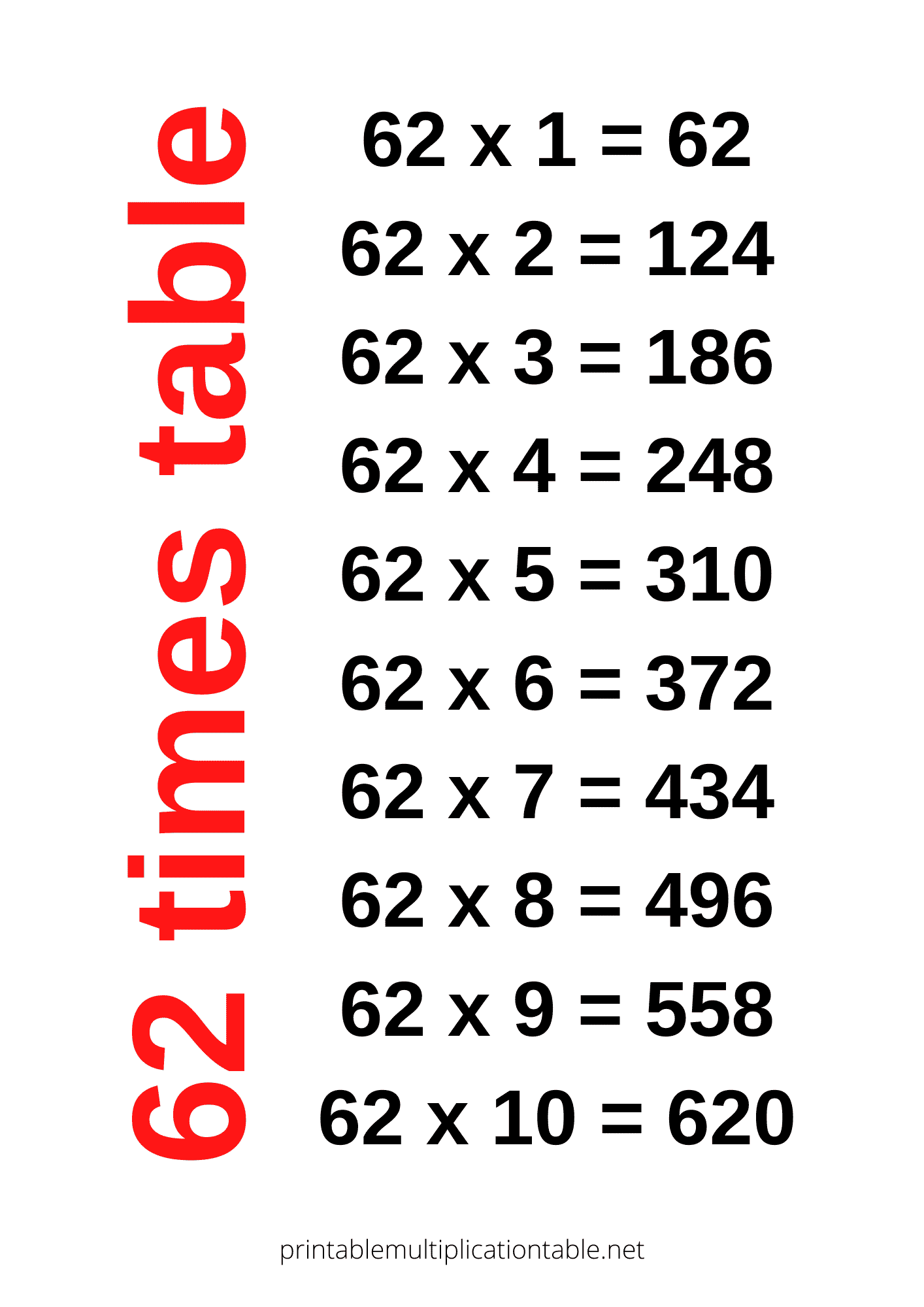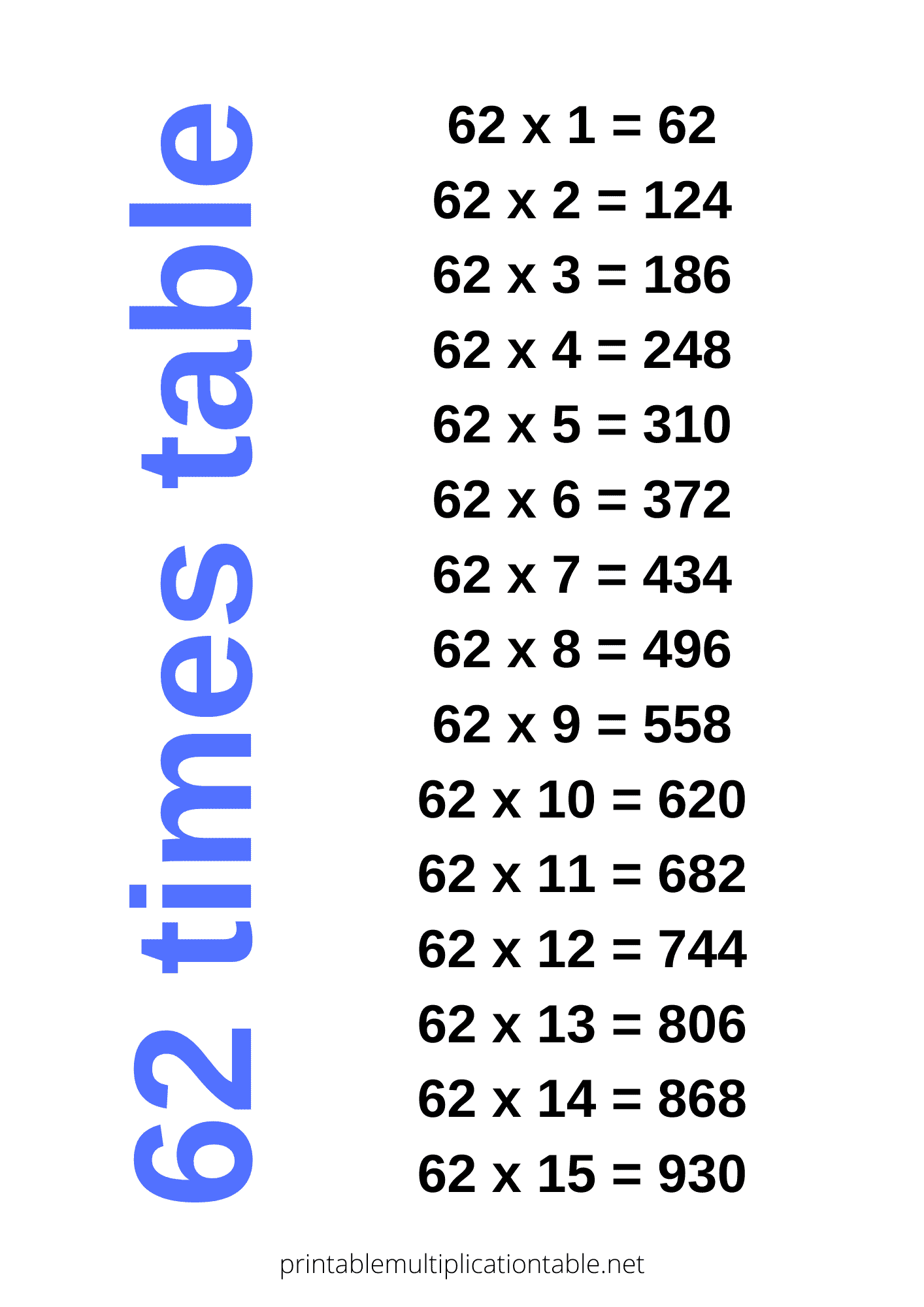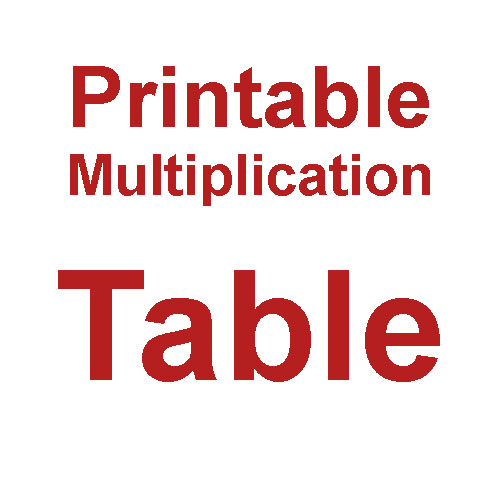62 Times Table
Hello there, dear readers! Today, we embark on a mathematical journey to unravel the mysteries of the 62 times table.
Now, I know what you might be thinking - "62 times table? That sounds like a challenge!" But fear not! With a sprinkle of curiosity and a dash of enthusiasm, we'll conquer this mathematical mountain together. So, fasten your seatbelts and let's dive right in!
Getting Started:
First things first, let's take a look at the basics. The 62 times table is all about multiplying numbers by 62.
It may seem daunting at first, but believe me, it's not as tricky as it appears. With a little practice and some helpful tips, you'll be multiplying with ease!
Starting Small
We'll begin by exploring the 62 times table with smaller numbers. This will help us build a foundation before tackling larger calculations. Let's take a look at the table up to 10:
- 1 x 62 = 62
- 2 x 62 = 124
- 3 x 62 = 186
- 4 x 62 = 248
- 5 x 62 = 310
- 6 x 62 = 372
- 7 x 62 = 434
- 8 x 62 = 496
- 9 x 62 = 558
- 10 x 62 = 620
Now, you might have noticed a pattern emerging. If you observe closely, you'll find that each subsequent product is obtained by adding 62 to the previous one. This pattern holds true throughout the entire times table.
Exploring the Patterns
Patterns are our friends when it comes to understanding multiplication tables. In the 62 times table, we can spot some interesting patterns that will make our journey smoother.
Pattern 1: The Units Digit
When you multiply any number by 2, the units digit repeats itself in a pattern: 2, 4, 6, 8, 0. Similarly, in the 62 times table, the units digit will follow this pattern: 2, 4, 6, 8, 0, 2, 4, 6, 8, 0, and so on.
Pattern 2: Alternating Parity
If you observe the numbers in the 62 times table, you'll notice that the parity (odd or even) alternates: odd, even, odd, even, and so on. This can be helpful in quickly identifying whether a product will be an odd or even number.
Using Multiples of 10
Now, let's take our exploration a step further and look at multiplying numbers that end in zero. When you multiply any number by 62, the product will have the same digit in the units place and the remaining digits will be 6 times the original number.
For example:
- 20 x 62 = 1240 (2 in the units place, 2 x 6 = 12 for the other digits)
- 30 x 62 = 1860 (2 in the units place, 3 x 6 = 18 for the other digits)
This pattern makes it easier to calculate the product when the multiplier ends in zero.
Putting It All Together
Now that we've explored the patterns and observed the structure of the 62 times table, it's time to put our newfound knowledge into practice. Remember, practice makes perfect!
Using mental math techniques, such as breaking down numbers or using known facts, can greatly simplify calculations. Additionally, memorizing the patterns we discussed earlier will boost your confidence and speed.
Sixty-two Multiplication Table
Read, Repeat and Learn sixty-twotimes table and Check yourself by giving a test below

Also check times table 61 times table 62 times table 63 times table 64 times table 65 times table 66 times table 67 times table 68 times table 69 times table 70 times table
62 Times Table Chart

Table of 62

62 Times table Test
Multiplication of 62
Reverse Multiplication of 62
Shuffled Multiplication of 62
How much is 62 multiplied by other numbers?
